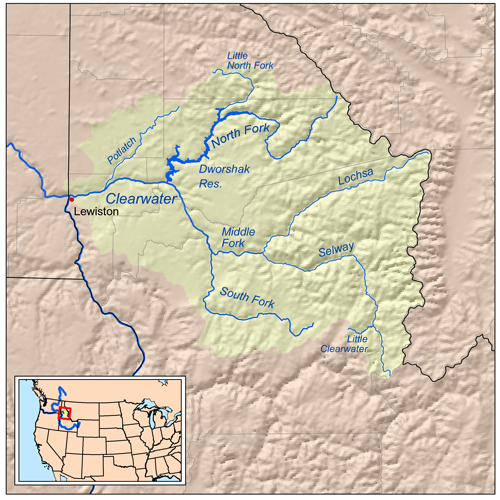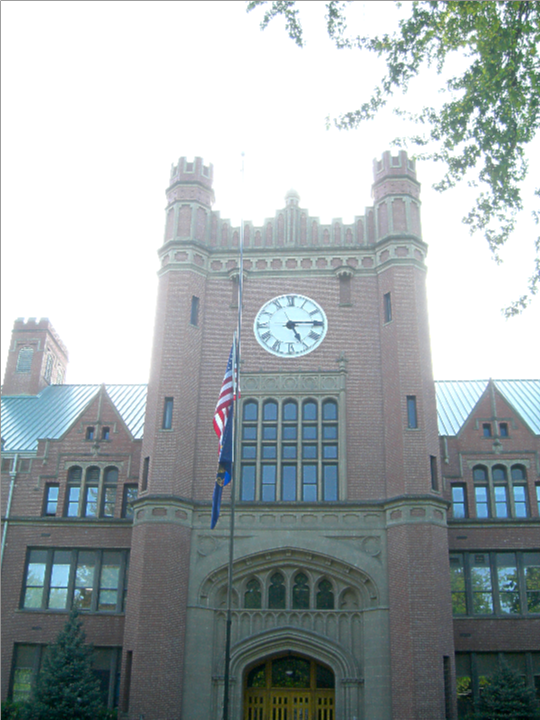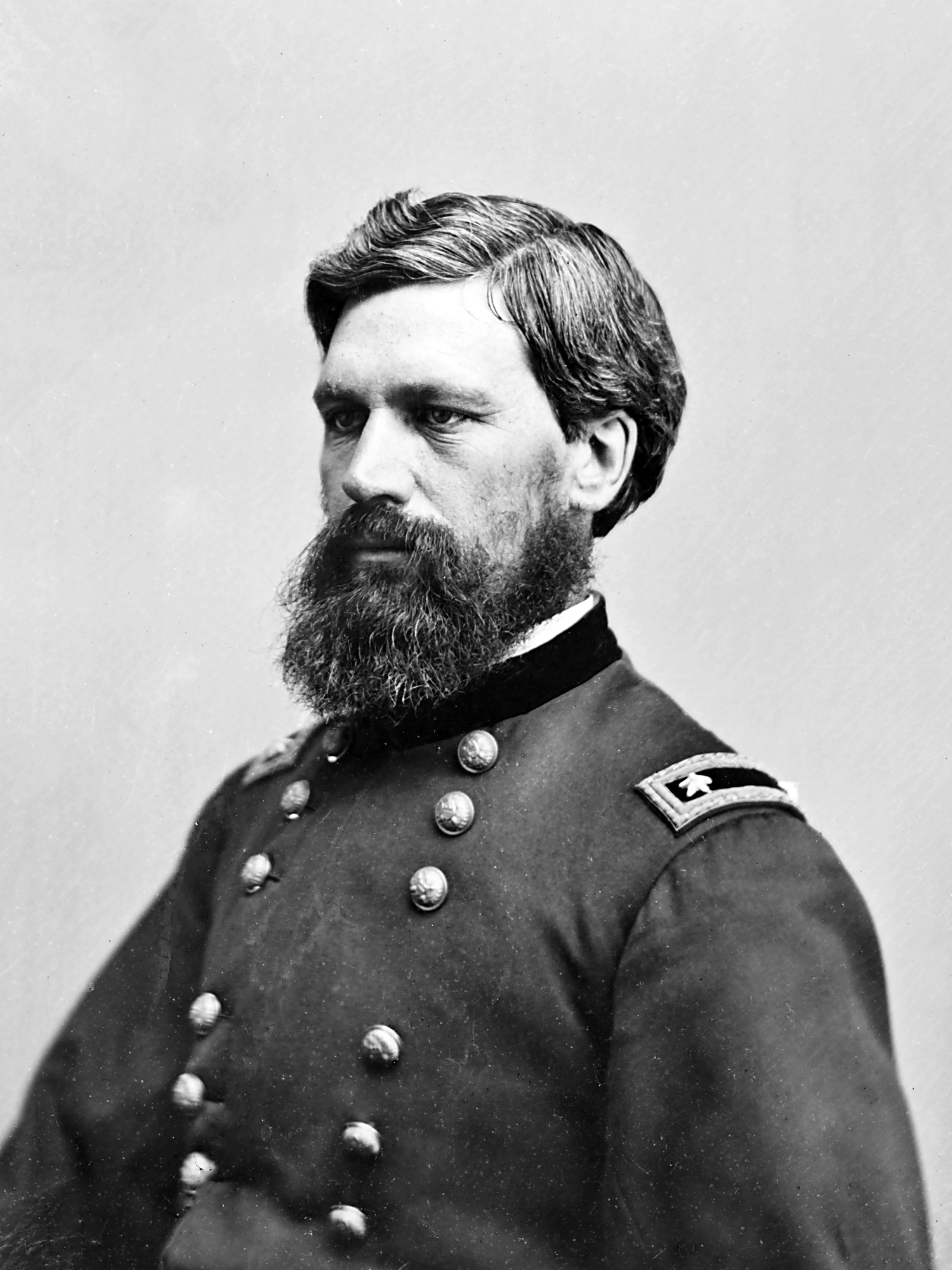|
Kooskia National Fish Hatchery
Kooskia National Fish Hatchery is a "mitigation" hatchery located on the Clearwater River within the Nez Perce Indian Reservation near Kooskia, in north-central Idaho. Construction began in 1966 by the Army Corps of Engineers. With funding provided by the United States per a water rights settlement the hatchery is managed and operated by the Nez Perce Tribe. The production goal is to raise and release up to 600,000 juvenile spring Chinook salmon annually. The fish hatchery was the site of Looking Glass's village which was attacked on July 1, 1877 by U.S. army soldiers. Looking Glass subsequently joined Chief Joseph to become a leader in the Nez Perce War The Nez Perce War was an armed conflict in 1877 in the Western United States that pitted several bands of the Nez Perce tribe of Indigenous peoples of the Americas, Native Americans and their allies, a small band of the ''Palus people, Palo .... A plaque describing the event and a nature trail on the site have been ... [...More Info...] [...Related Items...] OR: [Wikipedia] [Google] [Baidu] |
Kooskia National Fish Hatchery, ID (27869072311)
Kooskia ( ) is a city in Idaho County, Idaho, United States. It is at the confluence of the South and Middle forks of the Clearwater River, combining to become the main river. The population was 607 at the 2010 census, down from 675 in 2000. History Chief Looking Glass lived in a village a short distance above what is now Kooskia with his band of Nez Perce. This regular home was well within the boundaries of the reservation created in 1863, but just before the Nez Perce War an American General was sent to arrest Chief Looking Glass and all other Nez Perce with him. When trigger-happy militiamen opened fire into the village, many Nez Perce died and their village was destroyed in the scuffle. Because of this incident, Looking Glass joined with the Nez Perce for the Nez Perce War. The name of the town is likely a contraction of the Nez Perce word "koos-koos-kia," a diminutive which refers to the Clearwater River, the lesser of the two large rivers in the vicinity, the other being ... [...More Info...] [...Related Items...] OR: [Wikipedia] [Google] [Baidu] |
Clearwater River (Idaho)
The Clearwater River is in the northwestern United States, in north central Idaho. Its length is ,U.S. Geological Survey. National Hydrography Dataset high-resolution flowline data. , accessed May 3, 2011 westward from the Bitterroot Mountains along the Idaho-Montana border, and joins the Snake River at Lewiston. the Lewis and Clark Expedition descended the Clearwater River in dugout canoes, putting in at downstream from Orofino; they reached the Columbia Bar and the Pacific Ocean about six weeks later. By average discharge, the Clearwater River is the largest tributary of the Snake River. The River got its name for the Niimiipuutímt naming as ''Koos-Koos-Kia'' - "clear water". The drainage basin of the Clearwater River is . Its mean annual discharge is , Northwest Power and Conservation Council Course In the small town of Kooskia, the Middle Fork and South Fork of the Clearwater River join their waters to form the main stem of the Clearwater. The larger Middle Fork i ... [...More Info...] [...Related Items...] OR: [Wikipedia] [Google] [Baidu] |
Nez Perce Indian Reservation
The Nez Percé (; autonym in Nez Perce language: , meaning "we, the people") are an Indigenous people of the Plateau who are presumed to have lived on the Columbia River Plateau in the Pacific Northwest region for at least 11,500 years.Ames, Kenneth and Alan Marshall. 1980. "Villages, Demography and Subsistence Intensification on the Southern Columbia Plateau". ''North American Archeologist'', 2(1): 25–52." Members of the Sahaptin language group, the Nimíipuu were the dominant people of the Columbia Plateau for much of that time, especially after acquiring the horses that led them to breed the appaloosa horse in the 18th century. Prior to first contact with European colonial people the Nimiipuu were economically and culturally influential in trade and war, interacting with other indigenous nations in a vast network from the western shores of Oregon and Washington, the high plains of Montana, and the northern Great Basin in southern Idaho and northern Nevada. French explo ... [...More Info...] [...Related Items...] OR: [Wikipedia] [Google] [Baidu] |
Kooskia, Idaho
Kooskia ( ) is a city in Idaho County, Idaho, United States. It is at the confluence of the South and Middle forks of the Clearwater River, combining to become the main river. The population was 607 at the 2010 census, down from 675 in 2000. History Chief Looking Glass lived in a village a short distance above what is now Kooskia with his band of Nez Perce. This regular home was well within the boundaries of the reservation created in 1863, but just before the Nez Perce War an American General was sent to arrest Chief Looking Glass and all other Nez Perce with him. When trigger-happy militiamen opened fire into the village, many Nez Perce died and their village was destroyed in the scuffle. Because of this incident, Looking Glass joined with the Nez Perce for the Nez Perce War. The name of the town is likely a contraction of the Nez Perce word "koos-koos-kia," a diminutive which refers to the Clearwater River, the lesser of the two large rivers in the vicinity, the other being ... [...More Info...] [...Related Items...] OR: [Wikipedia] [Google] [Baidu] |
North Central Idaho
North Central Idaho is an area which spans the central part of the state of Idaho and borders Oregon, Montana, and Washington. It is the southern half of the Idaho Panhandle region and is rich in agriculture and natural resources. Lewis and Clark travelled through this area on their journey to the Pacific Ocean in 1805-06. The primary cities in this region are Lewiston and Moscow, home of the University of Idaho. Geography North Central Idaho consists of the following counties: *Clearwater *Idaho *Latah *Lewis *Nez Perce With the exception of the southern portion of Idaho County, this region observes Pacific Time.South of the western-flowing Salmon River, Idaho observes Mountain Time, beginning at Riggins. Primary cities * Lewiston: inland port on the Snake River, first capital of Idaho Territory in 1863. *Moscow: home of the University of Idaho, established in 1889. Highways Federal * - US-12 - west to Walla Walla, east to Missoula * - US-95 - north to Coeur d' ... [...More Info...] [...Related Items...] OR: [Wikipedia] [Google] [Baidu] |
Idaho
Idaho ( ) is a state in the Pacific Northwest region of the Western United States. To the north, it shares a small portion of the Canada–United States border with the province of British Columbia. It borders the states of Montana and Wyoming to the east, Nevada and Utah to the south, and Washington and Oregon to the west. The state's capital and largest city is Boise. With an area of , Idaho is the 14th largest state by land area, but with a population of approximately 1.8 million, it ranks as the 13th least populous and the 7th least densely populated of the 50 U.S. states. For thousands of years, and prior to European colonization, Idaho has been inhabited by native peoples. In the early 19th century, Idaho was considered part of the Oregon Country, an area of dispute between the U.S. and the British Empire. It officially became U.S. territory with the signing of the Oregon Treaty of 1846, but a separate Idaho Territory was not organized until 1863, instead ... [...More Info...] [...Related Items...] OR: [Wikipedia] [Google] [Baidu] |
United States Army Corps Of Engineers
, colors = , anniversaries = 16 June (Organization Day) , battles = , battles_label = Wars , website = , commander1 = LTG Scott A. Spellmon , commander1_label = Chief of Engineers and Commanding General of the U.S. Army Corps of Engineers , commander2 = MGbr>Richard J. Heitkamp, commander2_label = Deputy Chief of Engineers and Deputy Commanding General , commander3 = MGKimberly M. Colloton, commander3_label = Deputy Commanding General for Military and International Operations , commander4 = MGbr>William H. Graham, commander4_label = Deputy Commanding General for Civil and Emergency Operations , commander5 = COLbr>James J. Handura, commander5_label = Chief of Staff for the U.S. Army Corps of Engi ... [...More Info...] [...Related Items...] OR: [Wikipedia] [Google] [Baidu] |
Chinook Salmon
The Chinook salmon (''Oncorhynchus tshawytscha'') is the largest and most valuable species of Pacific salmon in North America, as well as the largest in the genus ''Oncorhynchus''. Its common name is derived from the Chinookan peoples. Other vernacular names for the species include king salmon, Quinnat salmon, Tsumen, spring salmon, chrome hog, Blackmouth, and Tyee salmon. The scientific species name is based on the Russian common name ''chavycha'' (чавыча). Chinook are anadromous fish native to the North Pacific Ocean and the river systems of western North America, ranging from California to Alaska, as well as Asian rivers ranging from northern Japan to the Palyavaam River in the Arctic northeast Siberia. They have been introduced to other parts of the world, including New Zealand, thriving in Lake Michigan Great Lakes of North America and Michigan's western rivers, and Patagonia. A large Chinook is a prized and sought-after catch for a sporting angler. The flesh of the ... [...More Info...] [...Related Items...] OR: [Wikipedia] [Google] [Baidu] |
Looking Glass (Native American Leader)
Looking Glass (''Allalimya Takanin'' c. 1832–1877) was a principal Nez Perce architect of many of the military strategies employed by the Nez Perce during the Nez Perce War of 1877. He, along with Chief Joseph, directed the 1877 retreat from eastern Oregon into Montana and onward toward the Canada–US border during the Nez Perce War. He led the Alpowai band of the Nez Perce, which included the communities of Asotin, Alpowa, and Sapachesap along the Clearwater River in Idaho. He inherited his name from his father, the prominent Nez Percé chief ''Apash Wyakaikt'' ("Flint Necklace") or ''Ippakness Wayhayken'' ("Looking Glass Around Neck") and was therefore called by the whites ''Looking Glass''. The Nez Perce War Although he disliked white encroachments on his ancestral lands, Looking Glass opposed going to war with the United States over its plans to force all the Nez Perce onto the reduced Indian reservation assigned to them at Lapwai, Idaho. His village of about 140 peopl ... [...More Info...] [...Related Items...] OR: [Wikipedia] [Google] [Baidu] |
Chief Joseph
''Hin-mah-too-yah-lat-kekt'' (or ''Hinmatóowyalahtq̓it'' in Americanist orthography), popularly known as Chief Joseph, Young Joseph, or Joseph the Younger (March 3, 1840 – September 21, 1904), was a leader of the Wal-lam-wat-kain (Wallowa) band of Nez Perce, a Native American tribe of the interior Pacific Northwest region of the United States, in the latter half of the 19th century. He succeeded his father Tuekakas (Chief Joseph the Elder) in the early 1870s. Chief Joseph led his band of Nez Perce during the most tumultuous period in their history, when they were forcibly removed by the United States federal government from their ancestral lands in the Wallowa Valley of northeastern Oregon onto a significantly reduced reservation in the Idaho Territory. A series of violent encounters with white settlers in the spring of 1877 culminated in those Nez Perce who resisted removal, including Joseph's band and an allied band of the Palouse tribe, to flee the United States in ... [...More Info...] [...Related Items...] OR: [Wikipedia] [Google] [Baidu] |
Nez Perce War
The Nez Perce War was an armed conflict in 1877 in the Western United States that pitted several bands of the Nez Perce tribe of Indigenous peoples of the Americas, Native Americans and their allies, a small band of the ''Palus people, Palouse'' tribe led by Red Echo (''Hahtalekin'') and Bald Head (''Husishusis Kute''), against the United States Army. Fought between June and October, the conflict stemmed from the refusal of several bands of the Nez Perce, dubbed "non-treaty Indians," to give up their ancestral lands in the Pacific Northwest and move to an Indian reservation in Idaho Territory. This forced removal was in violation of the 1855 Treaty of Walla Walla, which granted the tribe 7.5 million acres of their ancestral lands and the right to hunt and fish on lands ceded to the U.S. government. After the first armed engagements in June, the Nez Perce embarked on an arduous trek north initially to seek help with the Crow tribe. After the Crows' refusal of aid, they sought ... [...More Info...] [...Related Items...] OR: [Wikipedia] [Google] [Baidu] |
National Fish Hatcheries Of The United States
National may refer to: Common uses * Nation or country ** Nationality – a ''national'' is a person who is subject to a nation, regardless of whether the person has full rights as a citizen Places in the United States * National, Maryland, census-designated place * National, Nevada, ghost town * National, Utah, ghost town * National, West Virginia, unincorporated community Commerce * National (brand), a brand name of electronic goods from Panasonic * National Benzole (or simply known as National), former petrol station chain in the UK, merged with BP * National Car Rental, an American rental car company * National Energy Systems, a former name of Eco Marine Power * National Entertainment Commission, a former name of the Media Rating Council * National Motor Vehicle Company, Indianapolis, Indiana, USA 1900-1924 * National Supermarkets, a defunct American grocery store chain * National String Instrument Corporation, a guitar company formed to manufacture the first resonator gui ... [...More Info...] [...Related Items...] OR: [Wikipedia] [Google] [Baidu] |
.jpg)






